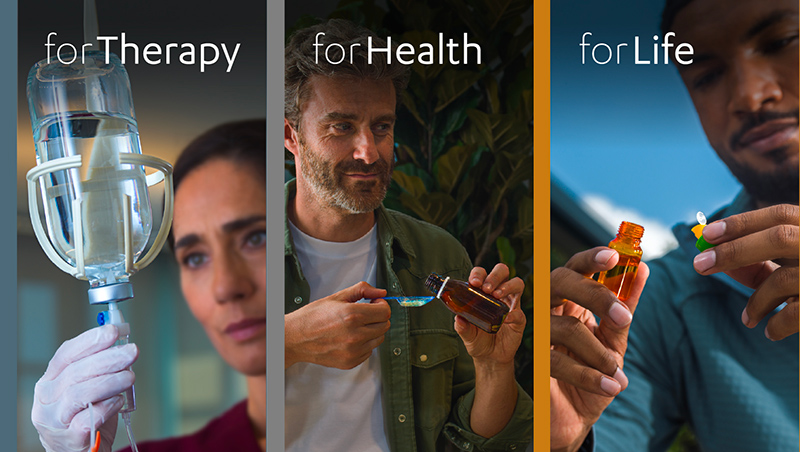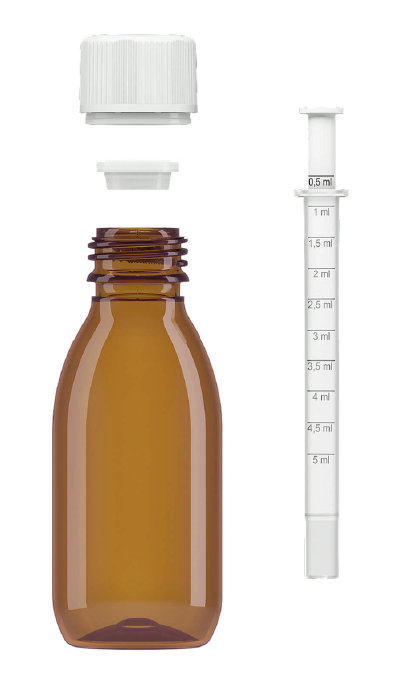Profile
Bormioli Pharma’s wide product ranges are designed and manufactured looking forward innovation and addressing ever-growing sustainability issues. Moreover, each product is specifically conceived for the destination market thanks to an accurate portfolio segmentation. Bormioli Pharma has a global presence in over 100 countries, with more than 1,400 employees and 9 plants across Europe specialized in the production of glass and plastic packaging. In 2023, the company sold more than 8 billion pieces and reported annual sales exceeding 370 million euros. As a partner to the pharmaceutical industry, Bormioli Pharma invests and innovates with a single goal: making health a positive practice, available to everyone, kind to the planet.
Bormioli Pharma showcases a diverse, full-service array of plastic and glass containers, along with caps, closures, and accessories. All these solutions are matchable to each other, allowing customers to configure the complete packaging, leveraging on a single supplier and building
process efficacy.

forTherapy: effective excellence for high-value drugs

The 'forTherapy' portfolio represents Bormioli Pharma's dedication to delivering quality and precision. This portfolio offers all-in-one packaging solutions encompassing the highest quality containers and vials made from Type I molded and tubing glass, as well as a wide variety of aluminum and rubber closures and accessories, and a spectrum of additional services able to amplify operational efficiency for the client.
forHealth: performance and capabilities for OTC medicines

The portfolio contains a wide range of solutions for daily medications and OTC drugs, encompassing from primary packaging to accessories and child-proof closures. Characterized by high production capabilities, safe design, and full compatibility, forHealth products also feature different barrier solutions, able to defend medicines from external agents, such as moisture, oxygen, and light.
forLife: a holistic platform to reduce well-being products time-to-market

In line with the demand for nutraceuticals and supplements, the 'forLife' portfolio steps forward with innovative dual-chamber systems. These systems enhance the reconstitution process, aided by an active layer that combats moisture, thereby prolonging the shelf life of active ingredients. The company also presents a holistic go-to-market platform, fostering collaborations with key value chain partners, including filling machine manufacturers. This strategic alliance accelerates product launches, reducing time-to- market and increasing efficiency.

Sustainability: an advanced product offer, an effective ESG approach
The company has been actively engaged in sustainability for over 15 years starting research on low impact materials, a commitment that has developed until now with the implementation of a concrete ESG strategy whose core is based on research on new, more sustainable packaging products.
The most evident outcome of this commitment is EcoPositive, a new range of eco-friendly solutions, developed consistently with 3 different sustainability approaches:
- Regenerate: glass and plastic packaging recycled from first-choice waste collection, such as rPET and rHDPE bottles
- Renew: bioplastic packaging derived from renewable sources, such as PE bottles and PP capsules produced from sugarcane leftovers
- Reloop: glass and advanced polymer products made from infinitely reusable materials, such as Carbon Capture PET bottles produced from the recovery and transformation of CO2 emissions.
These glass and plastic solutions can be provided together with detailed LCA studies, as well as
with extractables testing showing the safety in any conditions of these solutions in respect to
conventional ones.
Besides continuous R&D efforts on new, sustainable materials, Bormioli Pharma’s ESG strategy features measurable, concrete targets on 4 areas of action:
- using sustainable raw materials for 50% of its production by 2025
- reducing water consumption by 41% and CO2 emissions by 30% by 2030
- 95% office employees trained for D&I by 2025
- assessing 90% of its suppliers on the international rating platform EcoVadis, which measures the performance of the sustainability management system of suppliers.
Innovation: delivering consistent benefits to our partners through a robust consultancy approach
Bormioli Pharma relies on an innovation platform, named Invents, aimed at partnering with the pharmaceutical industry to transform emerging healthcare needs into industrial solutions.
Through a brand-new consultancy approach, stemming from a transformation that has occurred over the years with the goal of materializing the vision of future care, Bormioli Pharma provides complete end-to-end development solutions to all its customers, collaborating with them earlier to support their complex drug delivery projects.
During the years, the Group addressed its innovation efforts towards major healthcare needs, including promoting drug traceability and making medicine administration simpler, easier, and more accessible for everyone, thanks to inclusive design and IoT technologies.
Benefiting from a robust ecosystem of partners, and depending on the customer’s requirements, the company can engage the most suitable entities to address the specific needs. Among the internal and external stakeholders included in the Bormioli Pharma’s innovation ecosystem, there are also Innovation Hubs and accelerators, allowing the Group to stay on the edge of innovation, using a crowdsourcing approach to multiply and accelerate its development efforts. For example, the company has launched different contests with the open innovation platform Desall.com, calling the international innovation community to submit new ideas on a pre-defined brief.

Quality and Safety: essential preconditions for the pharma industry
Bormioli Pharma has adopted a rigorous approach to quality and the quality culture is widespread in the Company. Quality Assurance and Quality Control teams have a strong pharma expertise and GMP trainings are held frequently. Other key elements contributing to the quality assurance are a high focus on process control, a qualified supply chain, a continuous technical improvement and support to the regulatory process.
The company is ISO 9001:2015 and ISO 15378:2017 certified and the entire group is certified with integrated certification issued by BSI, one of the most important certification bodies at an international level.
Moreover, the company gained ISO 14001 and ISO 45001 certifications, which is the most important worldwide regulation related to the environment, occupational health, and safety management systems. Bormioli Pharma is registered with the main international control organizations and the products are in compliance with EP, USP and JP international standards.
Social media
